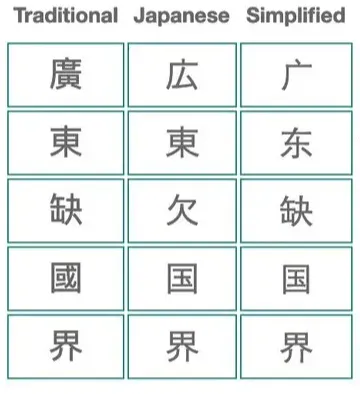Which Language Is Right for You? Should I Learn Japanese or Chinese?
Do you need help deciding if you should learn Chinese or Japanese?
Both languages offer different challenges and rewards. We will dive into factors to consider when making this decision. Still, trying to decide afterward? We will break down the Chinese and Japanese languages to help you see the major communication differences.
So, let's dive into this comprehensive comparison and help you make an informed choice on your language-learning path.
Factors to consider when choosing a language:
There are many factors to consider when wanting to learn Japanese or Chinese. Knowing your interests and goals will help you decide which language to choose and keep you motivated.
Personal interests and goals
Are you fascinated by Japanese anime, manga, and traditional arts like tea ceremonies and calligraphy? Or are you interested in Chinese history, literature, and the rich traditions of martial arts and Chinese cuisine?
Additionally, are you interested in traveling to China or Japan and wish to communicate with locals? Are you pursuing a career that requires proficiency in one of these languages? Or do you want to challenge yourself and expand your horizons?
Understanding your interests will help you engage more deeply with the language and culture, making the learning process enjoyable and fulfilling.
Global importance and opportunities

Asian languages such as Mandarin Chinese, and Japanese offer an opportunity to your career opportunities domestically and internationally.
There are about 125 Million people who speak native Japanese. However, that number is small compared to the number of Chinese speakers, which is about 1.3 billion. Being able to speak Chinese or Japanese allows you an opportunity to network, travel, study abroad, and even work abroad.
In 2010, China surpassed Japan to become the world's second-largest economy, marking a significant shift in global economic rankings. While Japan still offers opportunities, China's global market has become increasingly influential and attractive to businesses and investors.
Chinese and Japanese companies are willing to hire foreigners who speak their mother tongue and know English and other European languages as an added advantage in today's globalized and interconnected business world.
Comparing Japanese and Chinese cultures
While Chinese and Japanese cultures are very similar but exhibit distinct differences. Understanding these cultural aspects can play a significant role in your language-learning journey.
By exploring the cultural similarities and differences between Chinese and Japanese, you can gain a deeper appreciation for their languages and better understand the contexts in which they are used.
We have a whole article dedicated to this topic, "How to Tell the Difference Between Japanese and Chinese Language and Culture." Check it out!
While learning Chinese or Japanese culture is not required to learn these languages, having interest in one of the cultures is a great motivation.
Chinese and Japanese languages differences
Aspect |
Chinese language |
Japanese language |
Pronunciation |
Tonal language with four tones |
Pitch accent with fewer tonal variations |
Grammar |
Relatively straightforward |
More complex grammatical structure involving verb conjugations, Chinese particles, and honorific language |
Sentence Structure |
Rigid structure, less flexibility in word placement |
More flexibility due to the usage of particles |
Verb Conjugation |
Less verb conjugation for tense and aspect |
More verb conjugations for various forms and tenses |
Character Usage |
Has three writing systems: hiragana, katakana, and kanji |
There are many differences between the two languages. We deep dive into their linguistic differences.
Chinese vs Japanese writing system:

Traditional Chinese vs Japanese vs simplified Chinese, Daijiro Wachi☔
Native English speakers might struggle to learn Japanese and Chinese as both utilize symbols and characters in their written forms.
Japanese has three writing systems: hiragana, katakana, and kanji. Hiragana is the phonetic Japanese spoken language, katakana is for borrowed words not in their language, and Japanese kanji were adapted from Chinese characters.
However, Chinese only has one writing system: Hanzi. Hanzi is a Chinese character, while pinyin is a Romanization of the Chinese language. Despite having one Hanzi system, Chinese can be split into simplified and traditional characters.
Additionally, learning native Japanese words and basic phrases will take you a long way in Japan. However, the two major Chinese dialects where the standard Chinese language is Mandarin and the other major Chinese dialect is Cantonese. While hanzi characters are the same, their pronunciation is different.
Japanese and Chinese grammar structure

Chinese vs Japanese grammar structure differences compared to English
East Asian languages have different grammar structures. From an English native language perspective, Chinese and Japanese are placed as Category 5, needing 88 weeks or 2200 hours to learn both languages fully. There are distinctive disparities between the two language structures.
Japanese grammar generally follows SOV (subject, object, verb) language. In contrast, Chinese grammar follows SVO, similar to English, making learning and speaking Chinese easier than Japanese.
Additionally, the use of particles makes the Japanese different from the Chinese. Japanese uses particles such as は、, へ、, and に to show the relationship of words within a sentence. Chinese has a similar system of particles in its grammar.
Japanese and Chinese pronunciation challenges
Both Chinese and Japanese have pronunciation problems where one is a tonal language while the other requires practicing a pitch accent.

Japanese pitch accent, ankiweb
Speaking and learning Japanese involves understanding the rise and fall in pitch patterns of syllables within words.
However, learning Chinese means learning the 4 tones: flat, rising, falling, and then rising and falling.

Chinese tones, Pandanese FAQ
Hearing and speaking these tones takes a lot of work for English speakers, making Chinese difficult. But that doesn't mean it's not impossible!
Whether it is the pitch accent or the tones, both will take practice to sound native in their respective languages.
Is it a good idea to learn Japanese and Chinese at the same time?

Chinese vs Japanese vocabulary, LingoDeer
Learning both Japanese and Chinese languages takes a great amount of focus.
One of the biggest obstacles when learning two of these languages at once is the "false friends" or "false cognates." It is the same character or symbol, but they have different meanings.
Despite this and other obstacles, learning both languages at the same time will be an enriching experience. By dedicating effort to mastering each language individually over time, you will be bilingual with all its advantages!
Frequently Asked Questions
Is it worth learning Chinese as a second language?
It can provide some advantages when learning Chinese but does not necessarily make it significantly easier.
One major advantage is the shared characters from Japanese kanji that will let you recognize Chinese hanzi characters as long as they are not false cognates.
Is it easier to learn Chinese if you already know Japanese?
It can provide some advantages when learning Chinese, but it does not necessarily make it significantly easier.
One major advantage is the shared characters from Japanese kanji that will let you recognize Chinese hanzi characters as long as they are not false cognates.
What resources should I use to learn Japanese and Chinese?
There are many free resources to learn Chinese and Japanese. There is Quizlet that already has study sets and flashcards. You can use WaniKani for Japanese and Pandanese for Chinese for better memorization. They use mnemonics and SRS to help you build and retain each language's vocabulary.
Additionally, you can take a Chinese and Japanese language course online or abroad to help you be fully immersed in the language.
Is it possible to learn both Japanese and Chinese?
If you want to learn Japanese and Chinese at the same time, props to you. It is a challenging task due to the language differences.
It is not impossible, especially if you are familiar with one of the languages. But it will take time to grasp both languages at the same time fully.
What is harder to learn, Japanese or Chinese?
Both languages are difficult from an English-speaking perspective. They both have their pros and cons.
The hardest component of Japanese is their grammar, while memorizing Chinese characters is the most difficult for English speakers.
In closing
Ultimately, selecting which language to learn between Japanese and Chinese relies on individual interests, goals, and the global significance of each.
Knowing their linguistic similarities and differences will help you decide which language is easier to learn. If you decide to take on both languages, there are plenty of online resources to help you.
The easiest way to learn Chinese & build vocabulary

